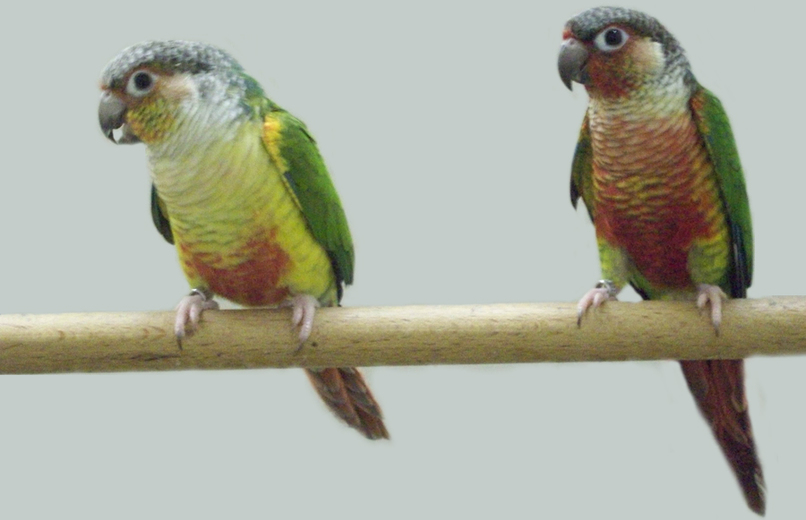The selective breeding of yellow & red dominant

The red yellow-side and red pineapple
Many of you probably know the opaline with e.g. the red-rumped parrot. With this species, breeders have succeeded – after selective breeding – in further breeding the red colour.
A similar procedure is also possible for the yellow-side and the pineapple. Selectively breeding these birds can finally result in yellow-sides and pineapples with a completely red belly and chest (= red vent).
Preserving the original, purebred yellow-side
However, I would also like to emphasize that breeding and preserving the original, purebred yellow-side (= hypoxantha) and the resulting pineapple is of the utmost importance.
In one of my previous articles on this mutation, I already made reference to the book Band 4 “Südamerikanische Sittiche”, written by the German ornithologist Thomas Arndt and published in April 1983.
In this work, Arndt writes that this mutation was discovered in 1900 by Salvadori in free nature between a group of wild coloured pyrrhura molinae sordida’s. An interesting fact is that these wild coloured molinae sordida’s had little brown-red on the belly, had a bleached throat and a light black head. The extremely detailed and coloured drawing in the book proves that this was also the case with the first wild yellow-side.
On page 122 of the above mentioned book, we can see a mutation with:
- a slightly bleached black-grey head
- a bleached throat
- mainly yellow on the belly and chest and where each feather is hemmed with a fine green line
- a small red mark on the belly
- flesh-coloured legs
This first wild yellow-side has thus no red nor light red on the chest or throat, only on the belly!
Conclusion
As I see it, it is extremely important to eventually come to two different forms of the yellow-side and the pineapple:
- on the one hand preserving the mutation discovered in the wild, where yellow dominates belly and chest (only red mark on the belly!)
- on the other hand further breeding the red colour via selection until it dominates the belly and chest
The accompanying pictures (taken by my wife Martine Snauwaert) will help clarifying my view on this matter.
